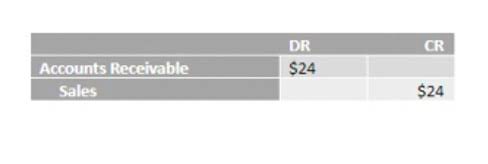
Net Working Capital (NWC) measures a company’s liquidity by comparing its operating current assets to its operating current liabilities. It can provide information on the short-term financial health of a company. Business executives usually aim for a positive net working capital, where current assets exceed current liabilities. The collection ratio, also known as days sales outstanding, is a measure of how efficiently a company can collect on its accounts receivable.
Order To Cash

A close check on the income and expenditure can provide the needed insights on how to your business’s financial health. Working capital helps a company measure its ability to pay up its short-term expenses and debts within a year. For efficient business operations, you need to settle these short-term payments when due. The current ratio (also called working capital ratio) is a financial ratio measuring a company’s ability to meet short-term obligations.
What Is the Formula for Cash Flow?
The working capital metric is relied upon by practitioners to serve as a critical indicator of liquidity risk and operational efficiency of a particular business. Understanding how changes in working capital can affect cash flows is important for a good financial model. In corporate finance, “current” refers to a time period of one year or less. Current assets are those that can be converted into cash within 12 months, while current liabilities are obligations that must be paid within the same timeframe. Even though the payment obligation is mandatory, the cash remains in the company’s possession for the time being, which increases its liquidity. The net effect is that more customers have paid using credit as the form of payment, rather than cash, which reduces the liquidity (i.e. cash on hand) of the company.
How to Calculate Working Capital Ratio
Since we’re measuring the increase (or decrease) in free cash flow, i.e. across two periods, the “Change in Net Working Capital” is the right metric to calculate here. Calculating working capital requires building a model in Excel and using data from a company’s income statement (IS) and balance sheet (BS). Additionally, since accountants prepare financial statements that include the information required for the NWC, they may easily calculate and monitor NWC for customers. Mr. Arora is an experienced private equity investment professional, with experience working across multiple markets. Rohan has a focus in particular on consumer and business services transactions and operational growth. Rohan has also worked at Evercore, where he also spent time in private equity advisory.
- If you receive a positive figure after subtracting current liabilities from current assets, you have positive working capital.
- Another important metric of working capital management is the inventory turnover ratio.
- Mr. Arora is an experienced private equity investment professional, with experience working across multiple markets.
- The often-used current ratio, as an indicator of liquidity, is seriously flawed because it’s conceptually based on the liquidation of all a company’s current assets to meet all of its current liabilities.
- A company with positive working capital generally has the potential to invest in growth and expansion.
- Understanding changes in cash flow is also important if you are applying for a small business loan.
The collection ratio calculation provides the average number of days it takes a company to receive payment after a sales transaction on credit. If a company’s billing department is effective at collecting accounts receivable, the company will have quicker access to cash which is can deploy for growth. Meanwhile, if the company has a long outstanding period, this effectively means the company is awarding creditors with interest-free, short-term loans. To calculate the working capital ratio, you have to put the account receivables, inventory and accounts payable in their appropriate categories (current assets and current liabilities).

The standard working capital formula used is to find the difference between your current assets and current liabilities. Costs like utility bills, raw materials, and rents are also under the current liabilities column. Your current assets must be valuable to pay off current liabilities for you (an entrepreneur) to have a smooth run.
What is the Working Capital Cycle?
- Examples of changes in net working capital include scenarios where a company’s operating assets grow faster than its operating liabilities, leading to a positive change in net working capital.
- The suppliers, who haven’t yet been paid, are unwilling to provide additional credit or demand even less favorable terms.
- This can be a temporary situation, such as when a company makes a large payment to a vendor.
- Alternatively, it could mean a company fails to leverage the benefits of low-interest or no-interest loans.
- The Change in WC / Change in Revenue is more significant for Zendesk, so we would probably average the 11.0%, 14.6%, and 2.5% numbers here and use that average figure in the projections.
Failing to do something to turn the problem around could lead to significant problems in the future. If the working capital cycle is trending downward relative to that in the past, that tends to be viewed as a positive sign, whereas upward movement points towards operational inefficiencies. If you’d like more detail on how to calculate working capital in a financial model, please see our additional resources below. Analyzing a company’s working capital can provide excellent positive change in working capital insight into how well a company handles its cash, and whether it is likely to have any on hand to fund growth and contribute to shareholder value. Therefore, the working capital peg is set based on the implied cash on hand required to run a business post-closing and projected as a percentage of revenue (or the sum of a fixed amount of cash). Suppose we’re tasked with calculating the net working capital (NWC) of a company with the following balance sheet data.
- The $500 in Accounts Payable for Company B means that the company owes additional cash payments of $500 in the future, which is worse than collecting $500 upfront for future products/services.
- Large firms and companies frequently employ NWC in their finance departments.
- Working capital as a ratio is meaningful when compared alongside activity ratios, the operating cycle, and the cash conversion cycle over time and against a company’s peers.
- In the final part of our exercise, we’ll calculate how the company’s net working capital (NWC) impacted its free cash flow (FCF), which is determined by the change in NWC.
- Working capital represents the financial resources available to businesses to fulfil their short-term obligations and sustain day-to-day operations.
Working Capital Requirement Formula

With credit limit up to Rs. 50 lakhs, businesses can apply for working capital loans from Razorpay in just three simple steps at zero collateral. Imagine if Exxon borrowed an additional $20 billion in long-term debt, boosting the current amount of $40.6 billion to $60.6 billion. The amount would be added to current assets without any debt added to current liabilities; since current liabilities are short-term, one year or less, and the $40.6 billion in debt is long-term. Below is Exxon Mobil’s (XOM) balance sheet from the company’s annual report for 2022. We can see current assets of $97.6 billion and current liabilities of $69 billion. Working capital is also important if you are trying to woo an investor or get approved for a small business loan.
- The collection ratio is calculated by multiplying the number of days in the period by the average amount of outstanding accounts receivable.
- The net working capital (NWC) metric is a measure of liquidity that helps determine whether a company can pay off its current liabilities with its current assets on hand.
- The working capital cycle formula is days inventory outstanding (DIO) plus days sales outstanding (DSO), subtracted by days payable outstanding (DPO).
- Working capital is a snapshot of a company’s current financial condition—its ability to pay its current financial obligations.








































